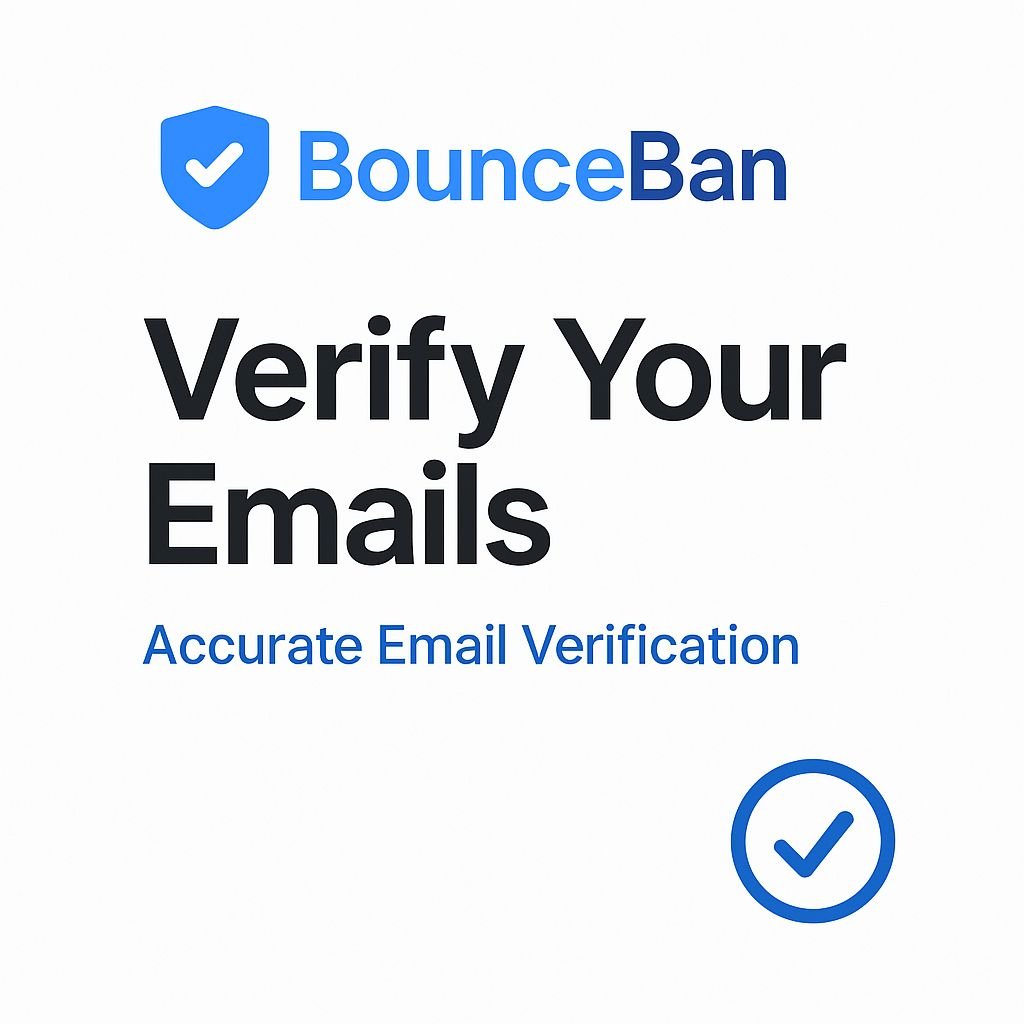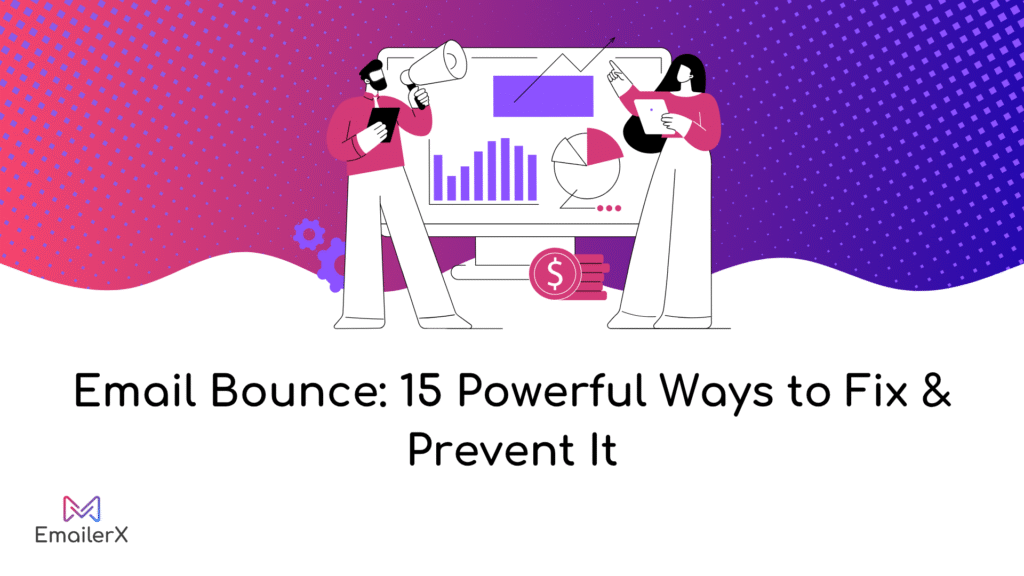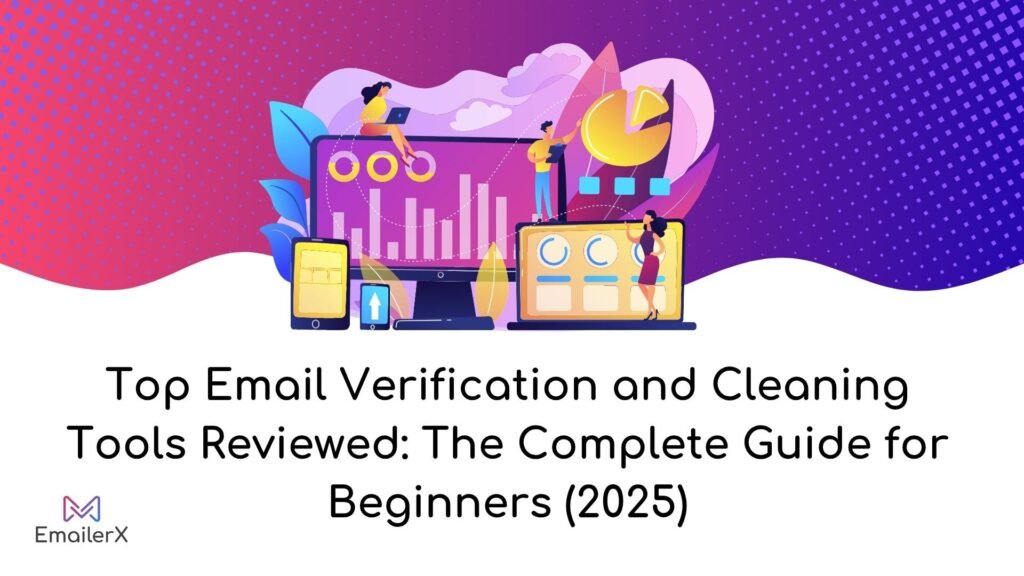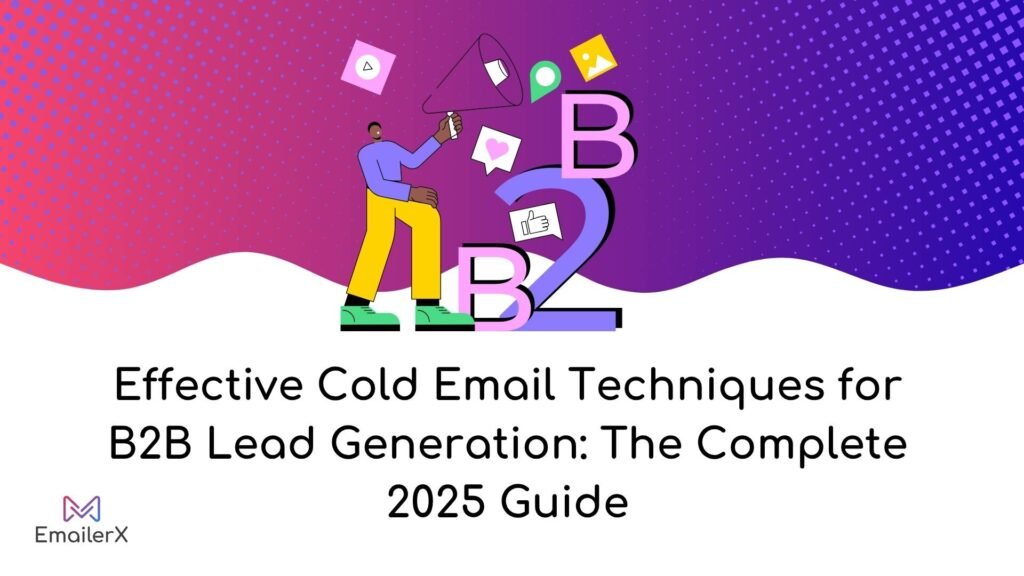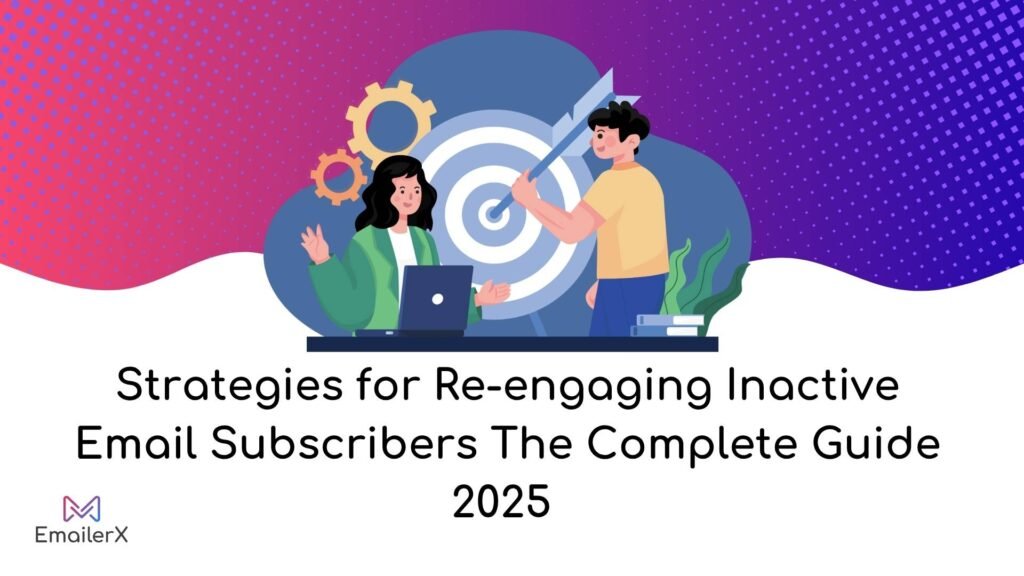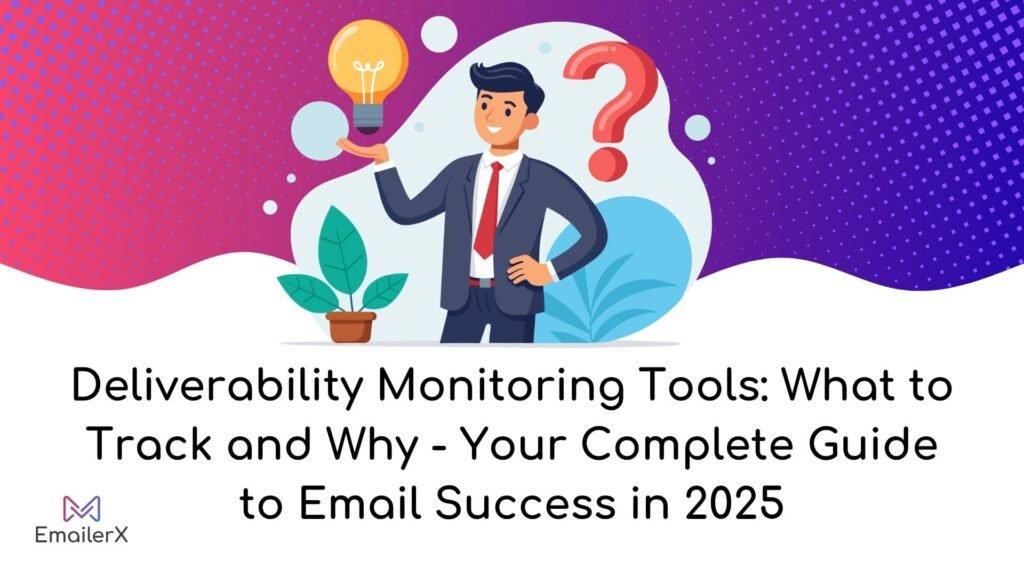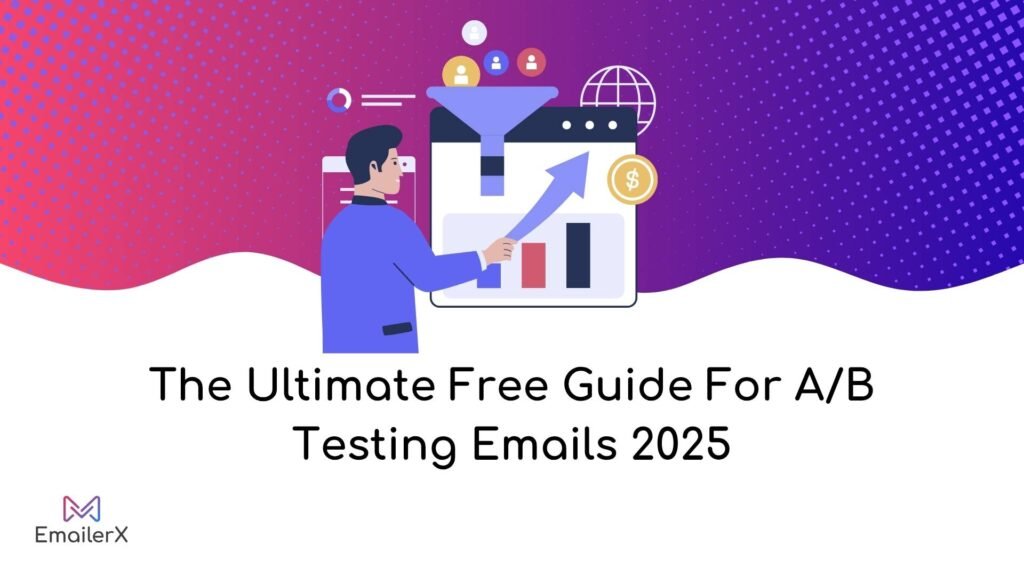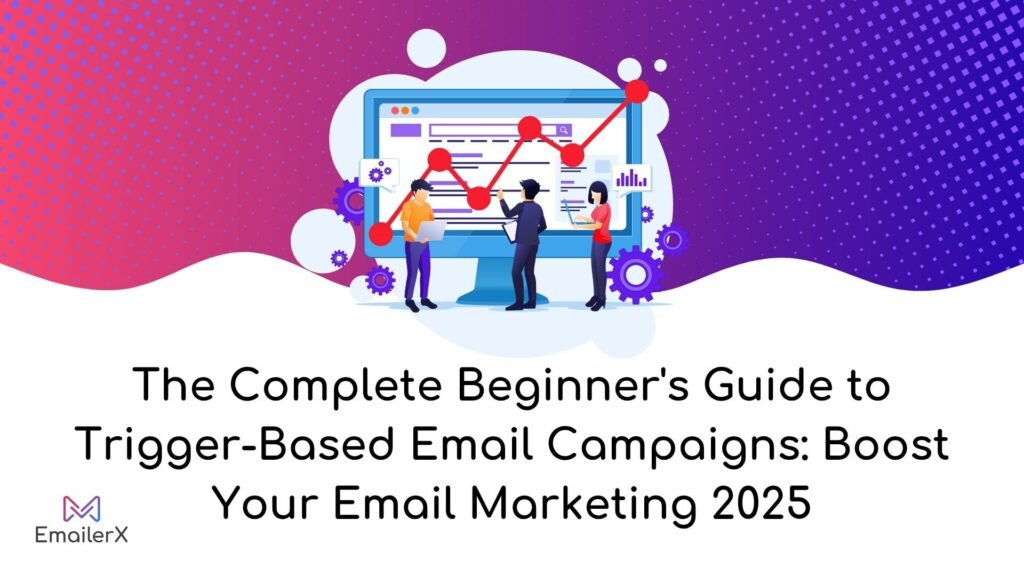In today’s hyper-competitive business landscape, the difference between thriving companies and those struggling to stay afloat often comes down to one critical factor: how effectively they integrate their email infrastructure with CRM systems.
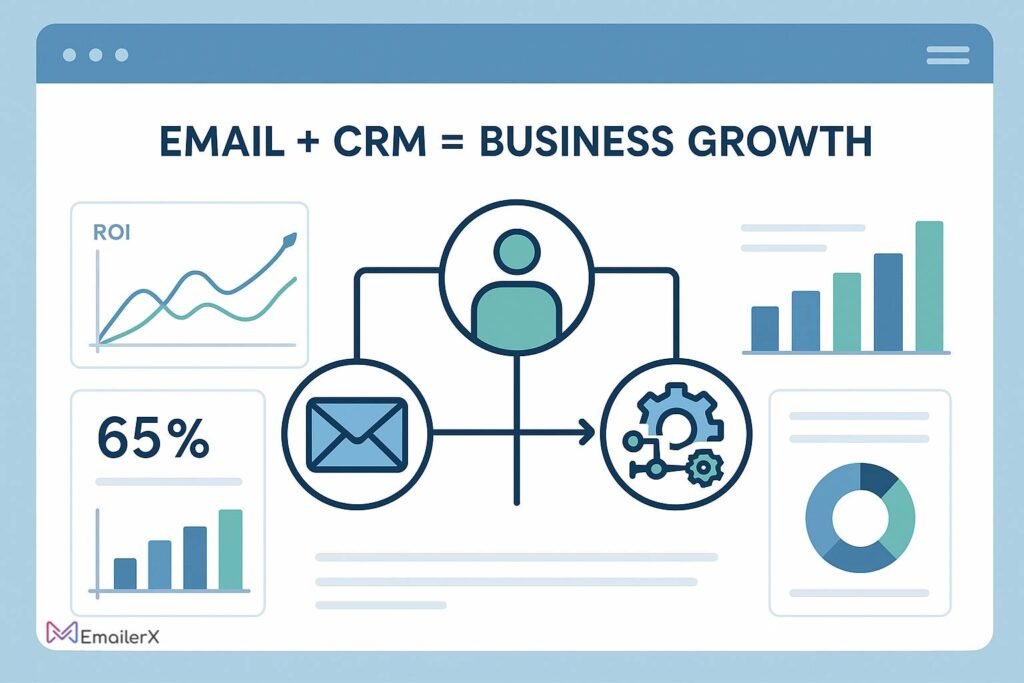
Research consistently shows that businesses using integrated CRM email marketing solutions experience:
- 47% increase in customer retention rates
- 74% better access to client data
- Typical return on investment yields $8.71 in revenue for each dollar spent
- 23% reduction in marketing expenses
But here’s the challenge: While 91% of companies with over 10 employees use CRM systems, less than 30% have successfully integrated their email infrastructure to maximize these benefits.
Table of Contents
ToggleWhat You’ll Learn in This Guide
This comprehensive guide will transform you from a beginner struggling with disconnected systems into an expert who can seamlessly integrate email infrastructure with CRM systems. We’ll cover everything from basic concepts to advanced automation strategies, with real-world examples and actionable steps you can implement immediately.
Whether you’re running a startup, managing a growing business, or working for an enterprise company, this guide will help you unlock the full potential of CRM email marketing integration.
Understanding Integrating Email Infrastructure with CRM Systems
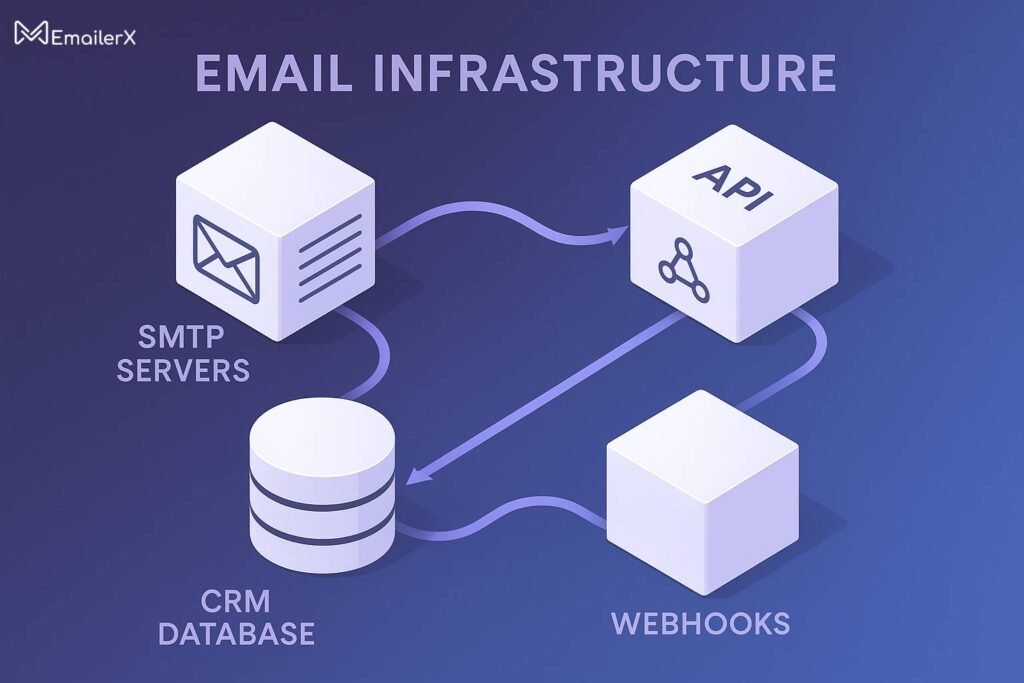
What Is Email Infrastructure CRM Integration?
Integrating email infrastructure with CRM systems means connecting your email marketing tools, SMTP servers, email service providers (ESPs), and communication channels directly with your customer relationship management platform. This creates a unified ecosystem where customer data flows seamlessly between systems, enabling personalized, automated, and highly effective email campaigns.
Core Components of Email Infrastructure Integration
1. Email Service Provider (ESP) Integration
Your ESP (like Mailchimp, Constant Contact, or SendGrid) must sync with your CRM to:
- Automatically update contact information
- Track email engagement metrics
- Trigger automated workflows based on customer behavior
2. SMTP Server Configuration
Proper SMTP setup ensures:
- Reliable email delivery
- Brand consistency across communications
- Advanced tracking and analytics
3. API Connections
Application Programming Interfaces (APIs) enable:
- Real-time data synchronization
- Automated contact management
- Custom workflow creation
4. Webhook Implementation
Webhooks provide:
- Instant notifications of email events
- Automated responses to customer actions
- Seamless data flow between platform
Benefits of Integrating Email Infrastructure with CRM
Enhanced Personalization
With integrated systems, you can create highly personalized emails using comprehensive customer data:
- Purchase history
- Browsing behavior
- Communication preferences
- Lifecycle stage
- Geographic location
Streamlined Workflow Management
Integration eliminates the need to switch between platforms, resulting in:
- Decreased hands-on data input tasks by as much as 80%
- Faster response times to customer inquiries
- Improved team collaboration
- Decreased risk of human error
Advanced Analytics and Reporting
Integrated systems provide deeper insights:
- Complete customer journey mapping
- Email performance across different segments
- Revenue attribution to specific campaigns
- Predictive analytics for future campaigns
Best CRM Email Marketing Platforms for Integration
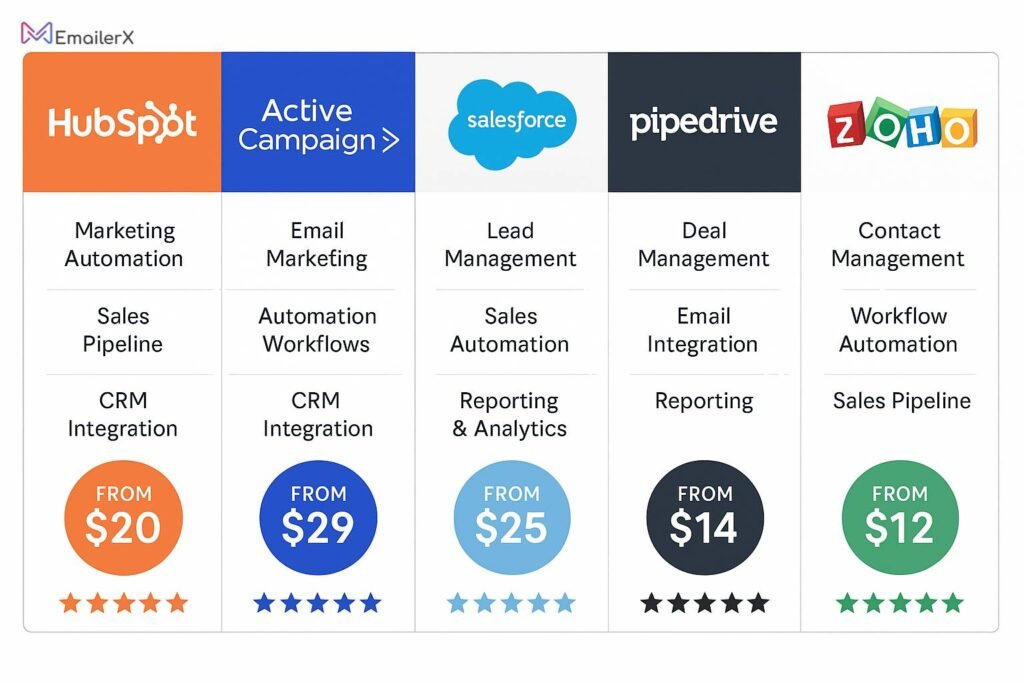
Top-Tier CRM Email Marketing Solutions
1. HubSpot – Best Overall CRM with Email Marketing Integration
Why Choose HubSpot:
- Free CRM with robust email marketing features
- 1,000 contacts and 2,000 emails monthly on free plan
- Advanced automation and lead scoring
- Seamless integration with 500+ tools
Key Features:
- Native email marketing platform
- Advanced segmentation capabilities
- A/B testing functionality
- Comprehensive analytics dashboard
- Landing page builder
- Social media integration
Pricing:
- Free: $0/month (1,000 contacts, 2,000 emails)
- Starter: $45/month (1,000 contacts, 5x email limit)
- Professional: $800/month (2,000 contacts, 10x email limit)
- Enterprise: $3,200/month (10,000 contacts, 10x email limit)
2. ActiveCampaign – Best for Advanced Email Automation
Why Choose ActiveCampaign:
- Industry-leading automation capabilities
- 500+ pre-built automation templates
- Advanced email deliverability
- Powerful CRM integration
Key Features:
- Visual automation builder
- Predictive sending
- Advanced segmentation
- Goal tracking
- Lead scoring
- SMS marketing integration
Pricing:
- Lite: $15/month (500 contacts)
- Plus: $49/month (500 contacts)
- Professional: $79/month (500 contacts)
- Enterprise: $145/month (500 contacts)
3. Salesforce – Best for Enterprise Email CRM Integration
Why Choose Salesforce:
- Market-leading CRM platform
- Extensive customization options
- Advanced AI capabilities (Einstein)
- Robust third-party integrations
Key Features:
- Pardot marketing automation
- Advanced lead management
- Custom email templates
- Comprehensive reporting
- Mobile CRM access
- API-first architecture
Pricing:
- Essentials: $25/user/month
- Professional: $80/user/month
- Enterprise: $165/user/month
- Unlimited: $330/user/month
4. Pipedrive – Best for Small Business CRM Email Marketing
Why Choose Pipedrive:
- User-friendly interface
- Excellent pipeline management
- Affordable pricing
- Strong email integration
Key Features:
- Email sync and tracking
- Custom email templates
- Deal-based email automation
- Mobile app
- Integration marketplace
- Visual sales pipeline
Pricing:
- Essential: $9.90/user/month
- Advanced: $19.90/user/month
- Professional: $39.90/user/month
- Enterprise: $59.90/user/month
5. Zoho CRM – Best Value CRM with Email Marketing
Why Choose Zoho CRM:
- Comprehensive feature set
- Excellent value for money
- Strong email marketing capabilities
- Part of larger Zoho ecosystem
Key Features:
- Zoho Campaigns integration
- Email templates and automation
- Social media integration
- Mobile CRM
- Workflow automation
- Advanced analytics
Pricing:
- Free: $0/month (3 users, 1,000 contacts)
- Standard: $14/user/month
- Professional: $23/user/month
- Enterprise: $40/user/month
Step-by-Step Guide: Integrating Email Infrastructure with CRM Systems
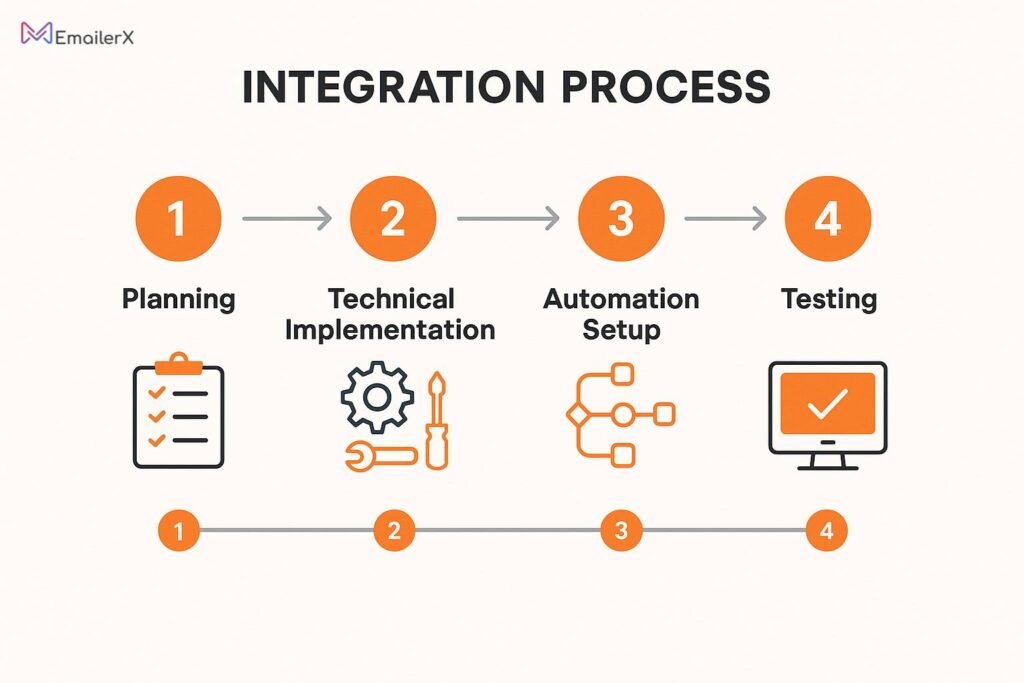
Phase 1: Planning Your Integration Strategy
Step 1: Assess Your Current Setup
Before starting the integration process, conduct a thorough audit of your existing systems:
Email Infrastructure Audit:
- Current email service provider
- Monthly email volume
- Email performance metrics
- Existing automation workflows
- Team members using email marketing
CRM System Evaluation:
- Current CRM platform
- Number of contacts in database
- Data quality assessment
- Current integrations
- User access levels
Step 2: Define Integration Goals
Establish clear objectives for your integration:
Primary Goals:
- Improve email personalization
- Increase conversion rates
- Streamline workflow processes
- Enhance customer segmentation
- Automate lead nurturing
Success Metrics:
- Email open rates improvement
- Click-through rate increases
- Conversion rate optimization
- Time saved on manual tasks
- Revenue attributed to email campaigns
Step 3: Choose Your Integration Method
Native Integration (Recommended)
- Use CRMs with built-in email marketing
- Examples: HubSpot, ActiveCampaign, Zoho
- Benefits: Seamless experience, better support
Third-Party Integration
- Connect separate CRM and email tools
- Use tools like Zapier, Make, or native APIs
- Benefits: Best-of-breed solutions, flexibility
Custom Integration
- Develop custom API connections
- Requires technical expertise
- Benefits: Complete customization, unique workflows
Phase 2: Technical Implementation
Step 1: Data Preparation and Cleaning
Contact Data Standardization:
1. Remove duplicate entries
2. Standardize naming conventions
3. Validate email addresses
4. Update incomplete records
5. Segment by data quality
Data Mapping:
- Map CRM fields to email platform fields
- Ensure consistent data formatting
- Plan for custom field creation
- Set up data validation rules
Step 2: API Configuration
For HubSpot Integration:
// Example API call for contact sync
const hubspot = require('@hubspot/api-client');
const hubspotClient = new hubspot.Client({
accessToken: 'your-access-token'
});
const contactObj = {
properties: {
email: 'customer@example.com',
firstname: 'John',
lastname: 'Doe',
lifecycle_stage: 'lead'
}
};
try {
const response = await hubspotClient.crm.contacts.basicApi.create(contactObj);
console.log('Contact created:', response);
} catch (error) {
console.error('Error:', error);
}
For Salesforce Integration:
// Example Salesforce API integration
const jsforce = require('jsforce');
const conn = new jsforce.Connection({
loginUrl: 'https://login.salesforce.com'
});
conn.login('username@company.com', 'password+token', (err, userInfo) => {
if (err) return console.error(err);
conn.sobject('Contact').create({
FirstName: 'John',
LastName: 'Doe',
Email: 'john.doe@example.com'
}, (err, ret) => {
if (err) return console.error(err);
console.log('Contact created:', ret.id);
});
});
Step 3: Webhook Setup
Setting Up Webhooks for Real-Time Sync:
- Email Event Webhooks:
- Email opens
- Link clicks
- Unsubscribes
- Bounces
- CRM Event Webhooks:
- New contact creation
- Deal stage changes
- Contact property updates
- Lead scoring changes
Example Webhook Handler:
app.post('/webhook/email-opened', (req, res) => {
const { email, campaignId, timestamp } = req.body;
// Update CRM with email engagement
updateCRMEngagement(email, {
lastEmailOpened: timestamp,
emailEngagementScore: calculateScore(email)
});
res.status(200).send('Webhook processed');
});
Phase 3: Automation Workflow Setup
Essential Email Automation Workflows
1. Welcome Series Automation
Trigger: New contact added to CRM
Actions:
– Send welcome email immediately
– Wait 3 days → Send introduction email
– Wait 7 days → Send value-add content
– Wait 14 days → Send special offer
2. Lead Nurturing Campaign
Trigger: Contact downloads lead magnet
Actions:
– Add to “Prospects” list
– Send confirmation email
– Start 5-email educational series
– Update lead score in CRM
3. Customer Onboarding
Trigger: Deal marked as “Closed Won”
Actions:
– Send congratulations email
– Create onboarding task in CRM
– Schedule follow-up emails
– Assign customer success manager
4. Re-engagement Campaign
Trigger: No email opens in 30 days
Actions:
– Send “We miss you” email
– Wait 7 days → Send special offer
– Wait 14 days → Remove from active lists
– Update CRM status to “Inactive”
Phase 4: Testing and Optimization
Integration Testing Checklist
Data Sync Testing:
- New contacts sync properly
- Email engagement updates CRM
- Segmentation works correctly
- Custom fields map accurately
- Automation triggers function
Email Delivery Testing:
- Test emails reach inbox
- Tracking pixels work
- Unsubscribe links function
- Mobile compatibility verified
- Spam score acceptable
Performance Testing:
- API rate limits respected
- Sync speed acceptable
- Error handling works
- Backup systems in place
- Monitoring alerts configured
Advanced Strategies for Integrating Email Infrastructure
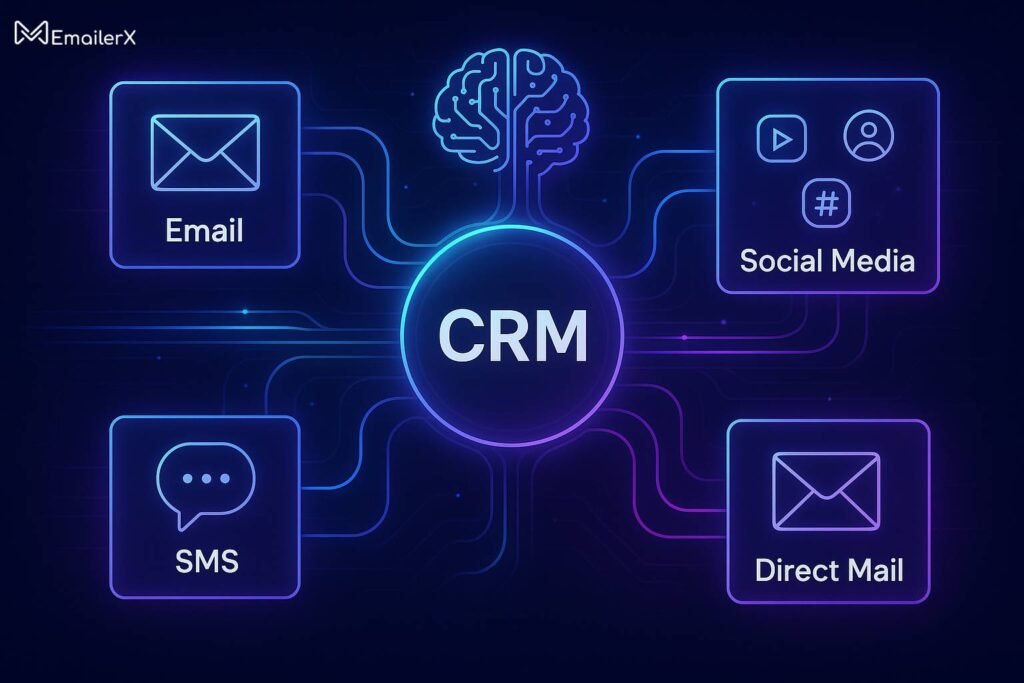
Dynamic Content Personalization
Level 1: Basic Personalization
- First name insertion
- Company name usage
- Geographic location
Level 2: Behavioral Personalization
- Recent website pages visited
- Product interests based on browsing
- Email engagement history
Level 3: Predictive Personalization
- AI-powered content recommendations
- Optimal send time prediction
- Lifecycle stage-based messaging
Advanced Segmentation Strategies
RFM Segmentation (Recency, Frequency, Monetary)
Segment customers based on:
– Recency: When did they last engage?
– Frequency: How often do they engage?
– Monetary: How much value do they provide?
Example segments:
– Champions: High RFM scores
– Loyal Customers: High frequency, moderate recency
– Big Spenders: High monetary, low frequency
– At-Risk: Previously high value, now declining
Lifecycle Stage Automation
Subscriber → Lead → Marketing Qualified Lead →
Sales Qualified Lead → Opportunity → Customer →
Evangelist
Each stage gets specific email sequences and CRM workflows
Multi-Channel Integration
Connecting Email with Other Channels:
- SMS marketing integration
- Social media automation
- Direct mail campaigns
- Push notifications
- In-app messaging
Unified Customer Journey:
Website Visit → Email Capture → CRM Entry →
Email Nurturing → SMS Follow-up →
Sales Call → Deal Closure →
Customer Success Emails → Upselling
Industry-Specific Email Infrastructure Integration Solutions
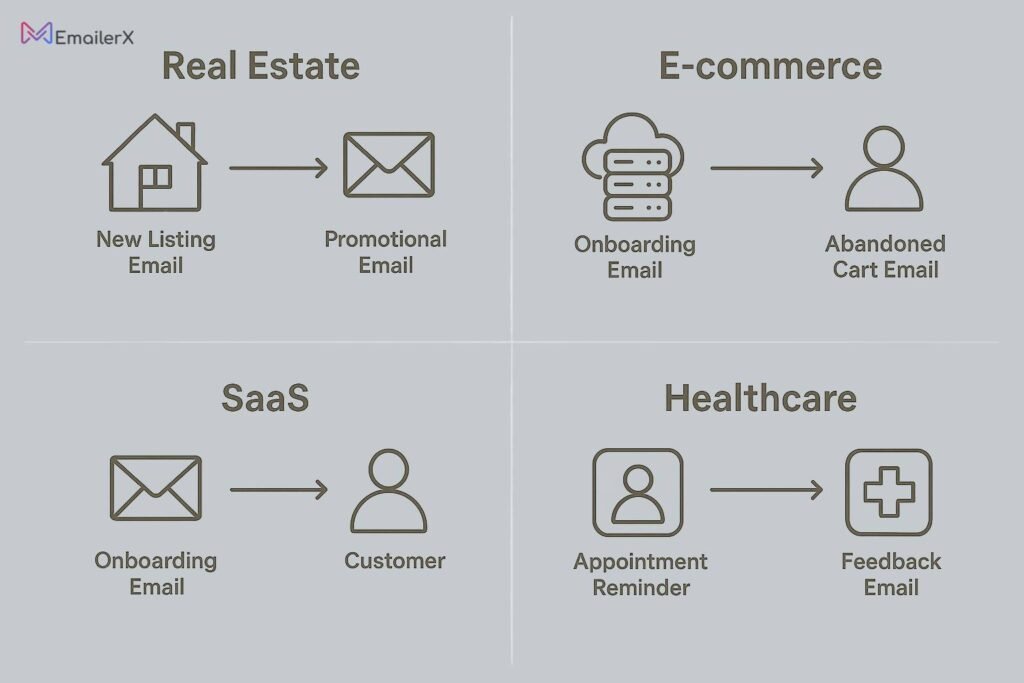
Real Estate CRM Email Marketing
Unique Requirements:
- Property listing automation
- Buyer/seller journey tracking
- Market update newsletters
- Closing milestone emails
Recommended Tools:
- Chime CRM + Mailchimp
- Follow Up Boss + ActiveCampaign
- Wise Agent + Constant Contact
Sample Automation:
New Lead Captured →
Instant Response Email →
Add to appropriate buyer/seller campaign →
Schedule follow-up tasks in CRM →
Send weekly market updates →
Track engagement and adjust approach
E-commerce CRM Email Integration
Essential Features:
- Abandoned cart recovery
- Purchase confirmation emails
- Product recommendation engines
- Customer lifetime value tracking
Top Platforms:
- Shopify + Klaviyo
- WooCommerce + Mailchimp
- Magento + Dotdigital
Revenue-Driving Workflows:
Cart Abandonment:
Wait 1 hour → Send reminder (60% recovery rate)
Wait 24 hours → Send with discount (15% recovery rate)
Wait 72 hours → Last chance email (5% recovery rate)
SaaS CRM Email Marketing
Key Focus Areas:
- Trial user onboarding
- Feature adoption tracking
- Churn prevention
- Expansion revenue
Proven Combinations:
- HubSpot + Intercom
- Salesforce + Marketo
- Pipedrive + Drip
SaaS Email Sequences:
Trial Signup → Welcome & Setup Guide →
Feature Introduction Series → Usage Tracking →
Upgrade Prompts → Renewal Campaigns →
Expansion Opportunities
Healthcare CRM Email Integration
Compliance Considerations:
- HIPAA compliance requirements
- Patient consent management
- Secure communication protocols
- Appointment reminder systems
Specialized Solutions:
- SimplePractice + MailChimp (HIPAA)
- TherapyNotes + Constant Contact
- Epic + Custom Solutions
Troubleshooting Common Integration Issues
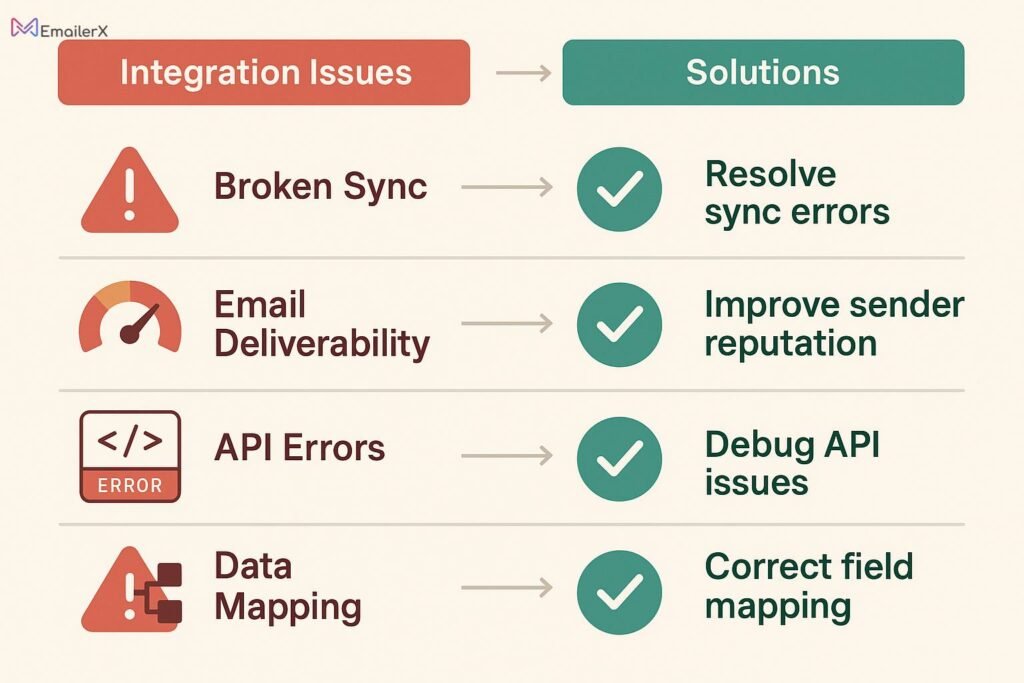
Data Synchronization Problems
Issue: Contacts Not Syncing
Common Causes:
– API rate limits exceeded
– Field mapping errors
– Authentication problems
– Data format mismatches
Solutions:
1. Check API call logs
2. Verify field mappings
3. Refresh authentication tokens
4. Standardize data formats
Issue: Duplicate Contacts Created
Prevention Strategies:
– Set up deduplication rules
– Use email as unique identifier
– Regular database cleaning
– Implement merge workflows
Email Deliverability Issues
Problem: Emails Going to Spam
Troubleshooting Steps:
1. Check sender reputation
2. Verify SPF/DKIM/DMARC records
3. Review email content for spam triggers
4. Monitor bounce rates
5. Implement list hygiene practices
Problem: Low Engagement Rates
Optimization Strategies:
– Improve subject lines
– Segment more precisely
– Test send times
– Personalize content
– A/B test email templates
API Integration Challenges
Authentication Errors
# Example error handling for API calls
import requests
import time
def api_call_with_retry(url, headers, data, max_retries=3):
for attempt in range(max_retries):
try:
response = requests.post(url, headers=headers, json=data)
if response.status_code == 200:
return response.json()
elif response.status_code == 429: # Rate limit
time.sleep(2 ** attempt) # Exponential backoff
else:
response.raise_for_status()
except requests.exceptions.RequestException as e:
if attempt == max_retries - 1:
raise e
time.sleep(1)
Future Trends in Email Infrastructure CRM Integration
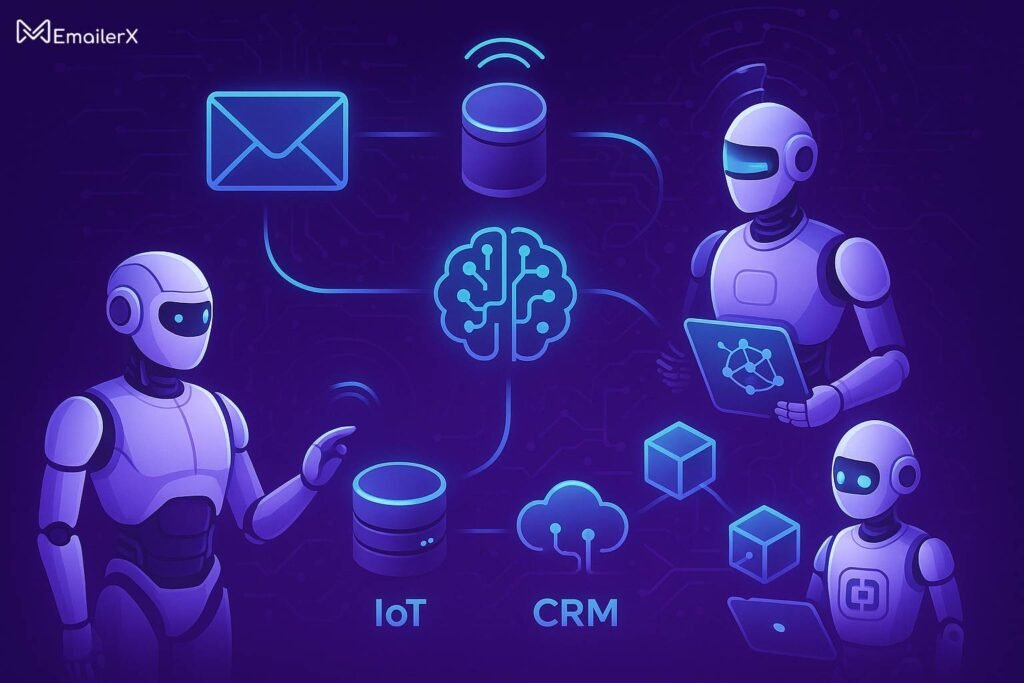
AI-Powered Email Marketing
Emerging Capabilities:
- Predictive Send Time Optimization: AI determines the best time to send emails for each individual contact
- Content Generation: AI creates personalized email content based on customer data
- Behavioral Prediction: Machine learning predicts customer actions and optimizes campaigns accordingly
Implementation Example:
AI Analysis → Customer likely to churn
Automated retention campaign
Personalized offer generation
Optimal send time calculation
Automated send and tracking
Privacy-First Integration
Adapting to Privacy Regulations:
- Zero-Party Data Collection: Direct customer preference gathering
- Consent Management: Integrated permission tracking
- Data Minimization: Only collecting necessary information
Omnichannel Integration Evolution
Next-Generation Connections:
- Voice assistant integration
- IoT device communication
- Augmented reality experiences
- Blockchain-verified communications
Conclusion: Your Next Steps to Email CRM Integration Success
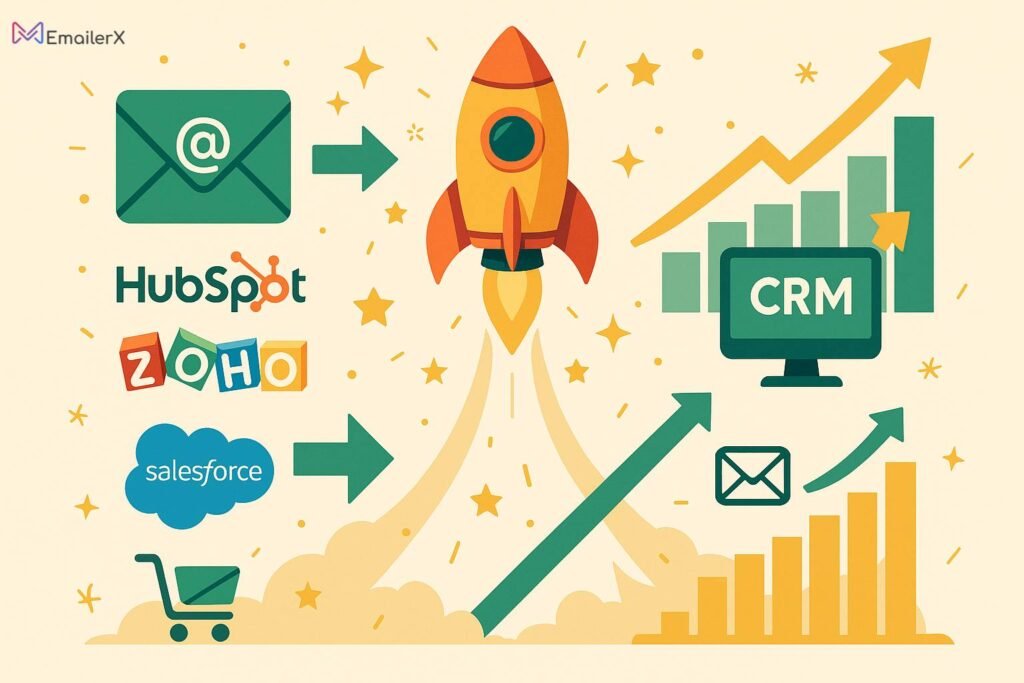
Integrating email infrastructure with CRM systems isn’t just a technical upgrade—it’s a strategic transformation that can revolutionize how your business communicates with customers and drives growth.
Key Takeaways
- Start with Strategy: Plan your integration goals before choosing tools
- Choose the Right Platform: Match CRM capabilities to your business needs
- Focus on Data Quality: Clean data is the foundation of successful integration
- Implement Gradually: Start with basic integration, then add advanced features
- Monitor and Optimize: Continuously improve based on performance data
Your Implementation Roadmap
Week 1-2: Planning and Preparation
- Audit current systems and data
- Define integration goals and success metrics
- Research and compare CRM platforms
- Plan data migration strategy
Week 3-4: Platform Selection and Setup
- Choose CRM and email marketing tools
- Set up accounts and basic configurations
- Begin data cleaning and preparation
- Train team members on new systems
Week 5-6: Integration Implementation
- Configure API connections
- Set up basic automation workflows
- Test data synchronization
- Implement tracking and analytics
Week 7-8: Testing and Optimization
- Conduct thorough integration testing
- Launch pilot campaigns
- Monitor performance metrics
- Gather user feedback and adjust
Ongoing: Continuous Improvement
- Regular performance reviews
- Advanced feature implementation
- Team training and development
- Strategic optimization
Frequently Asked Questions
What is the best CRM for email marketing integration?
The best CRM depends on your specific needs:
–For beginners: HubSpot (free plan available)
–For advanced automation: ActiveCampaign
–For small businesses: Pipedrive
–For enterprises: Salesforce
–For budget-conscious: Zoho CRM
How much does it cost to integrate email marketing with CRM?
Costs vary significantly:
–Free options: HubSpot, Zoho CRM free plans
–Budget range: $15-50/month for small businesses
–Mid-range: $100-500/month for growing companies
–Enterprise: $1,000+/month for large organizations
Can I integrate my existing email marketing tool with any CRM?
Most modern CRMs offer integration options:
–Native integrations: Direct connections available
–Third-party tools: Zapier, Make, Integromat
–API connections: Custom development required
–Data export/import: Manual process option
How long does it take to set up email CRM integration?
Timeline depends on complexity:
–Basic integration: 1-3 days
–Advanced automation: 1-2 weeks
–Custom development: 4-12 weeks
–Enterprise implementation: 3-6 months
What data should I sync between email and CRM systems?
Essential data points:
-Contact information (name, email, phone)
-Engagement metrics (opens, clicks, unsubscribes)
-Purchase history and preferences
-Lead scores and lifecycle stages
-Custom fields relevant to your business
How do I ensure GDPR compliance with email CRM integration?
Compliance steps:
-Implement clear consent mechanisms
-Provide easy unsubscribe options
-Maintain consent records in CRM
-Offer data portability features
-Regular compliance audits
What are the most common integration mistakes to avoid?
Top mistakes:
-Poor data quality before integration
-Not testing thoroughly before launch
-Ignoring mobile optimization
-Overcomplicating initial setup
-Neglecting user training
How do I measure the success of my email CRM integration?
Key metrics to track:
–Email performance: Open rates, click rates, conversions
–Efficiency gains: Time saved, manual tasks reduced
–Revenue impact: Sales attributed to email campaigns
–Customer satisfaction: Engagement improvements
–Data quality: Accuracy and completeness metrics
Can I integrate multiple email marketing tools with one CRM?
Yes, but consider:
-Data conflicts and duplications
-Increased complexity
-Higher costs
-Training requirements
-Use case justification
What’s the ROI of email CRM integration?
Typical ROI benefits:
–Average ROI: $8.71 for every $1 invested
-Efficiency gains: 30-50% time savings
–Conversion improvements: 10-25% increase
–Customer retention: 20-30% improvement



